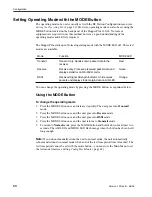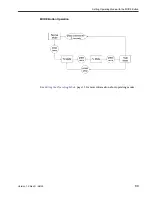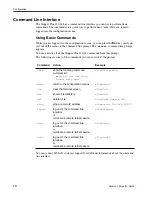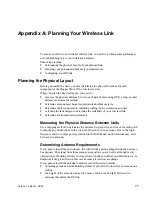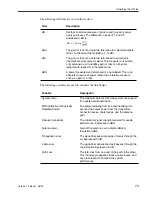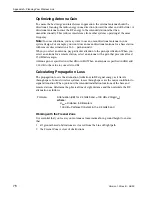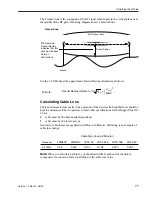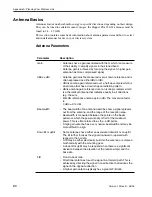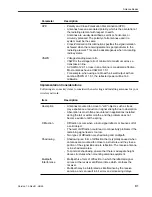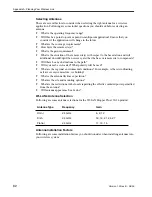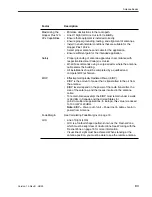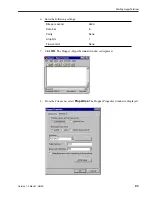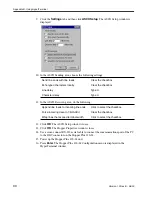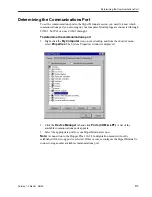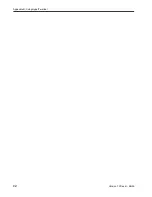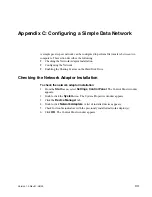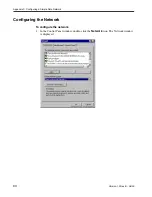
Appendix A: Planning Your Wireless Link
82
Version 1.0 Rev B - 08/00
Selecting Antennas
There are several factors to consider when selecting the right antenna for a wireless
application. Following are some initial questions you should ask before selecting an
antenna:
¥
What is the operating frequency range?
¥
Will this be a point-to-point or point-to-multipoint application? Ensure that you
consider if the application will change in the future.
¥
What are the coverage requirements?
¥
How far is the remote site(s)?
¥
What is the gain requirement?
¥
What is the elevation of the remote site(s) with respect to the base station and will
additional downtilt/uptilt be necessary at either the base or remote site to compensate?
¥
Will there be any obstructions in the path?
¥
Will systems be co-located? What polarity will be used?
¥
What are the regional environmental conditions? For example, is there windloading,
salt air, excessive moisture, ice buildup?
¥
What is the antenna lifetime expectation?
¥
What are the site and mounting options?
¥
What are the restrictions in the locale regarding the effective radiated power permitted
from the antenna?
¥
Will antenna appearance be a factor?
Wi-LAN’s Antenna Selection
Following are some antenna selections for the Wi-LAN Hopper Plus 120-24 product:
Antenna Installation Factors
Following are some installation factors you should consider when installing antennas into
your wireless system:
Antenna Type
Frequency
Gain
Omni
2.4 GHz
6, 9, 12
Dish
2.4 GHz
18, 19, 21, 24, 27
Planar
2.4 GHz
11, 13, 16

